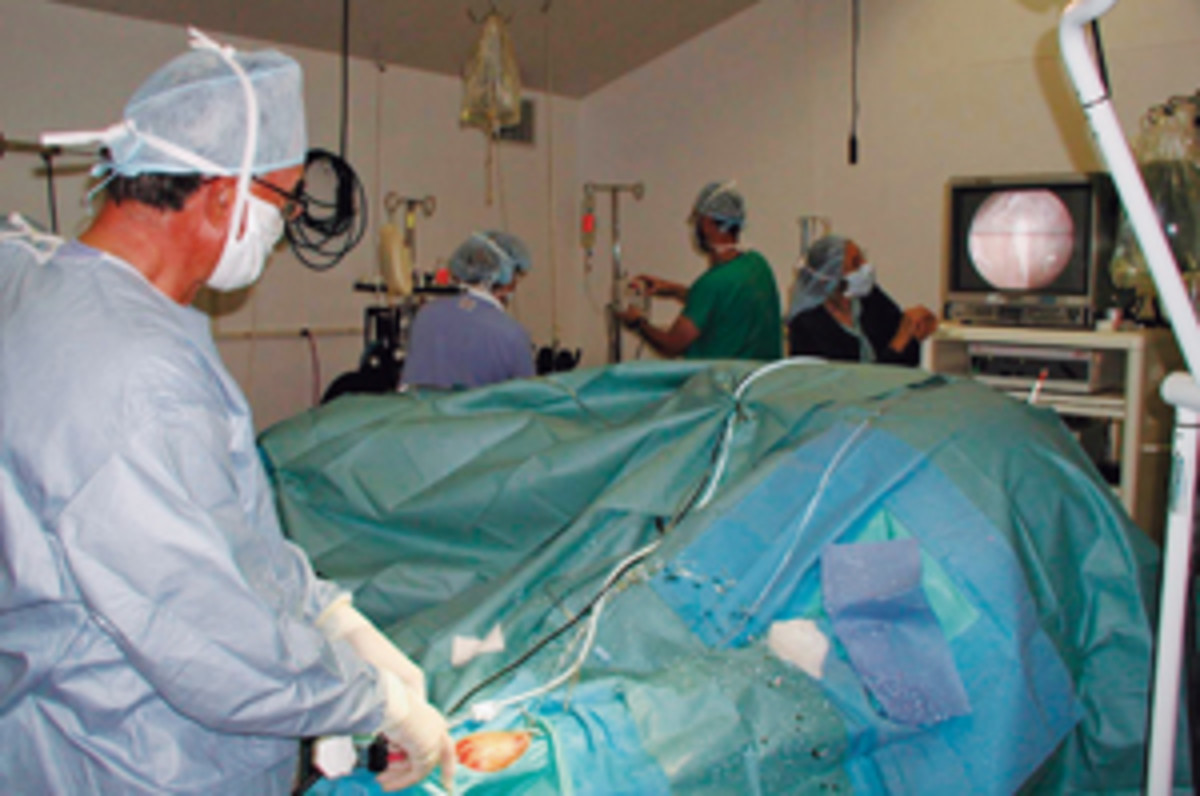
I have seen some significant changes evolve in the 44 years I’ve been practicing veterinary medicine. The changes are based on greater knowledge and understanding of disease processes. With more knowledge and technological advances, diagnosis of problems has become more accurate, and therefore treatment can be more effective. I would like to use a couple of common horse problems as examples.
Colic is probably the most common life-threatening condition to horses of all ages and use. As a veterinarian, I still find educating horse owners about colic to be a critical issue when faced with a colicky horse. Colic is just a term that describes a horse with symptoms of abdominal pain. The cause can be anything from gas pain, that will spontaneously resolve, to a torsion or physical displacement of a section of bowel that will be fatal unless surgically corrected in a timely manner.
Therefore, it is critically important to be able to differentiate the causes of colic pain early. Experience in evaluating the degree of pain, and response or lack of response to drugs is still an on-site basis to decide whether or not to refer a horse to a surgical facility. But, there are still some cases that are difficult to decide, whether or not surgery is indicated. With newer technology, such as X-ray machines that can diagnose the presence of a large stone (enterolith), or ultrasound evaluation of the abdomen for changes in the bowel wall, decisions can be made more objectively.
Anesthesia, surgical techniques and facilities, and life-supporting treatments have drastically increased the survival rates in horses with this condition. And there are many more of these facilities available to horse owners now throughout the country. When I first graduated in 1962, about the only place colic surgery was performed in Northern California was the veterinary school at UC Davis.
Another example of advanced capabilities regarding horse problems is lameness diagnosis and treatment. Radiographic evaluation of bone that can be digitally enhanced, ultrasonography of soft-tissue structures such as tendons and ligaments, and magnetic resonance imaging (MRI) can more specifically identify the cause of a problem.
Accurately defining the lesion causing the problem is critical to effective treatment and prognosis. Arthroscopic joint surgery in the horse has evolved as a very effective tool in dealing with problems such as bone chips or certain developmental orthopedic problems in growing horses.
After mentioning some advances I’ve witnessed in 44 years that I think are impressive, I would also have to admit some things don’t change. The best option is to choose a sound horse and take care of him.










